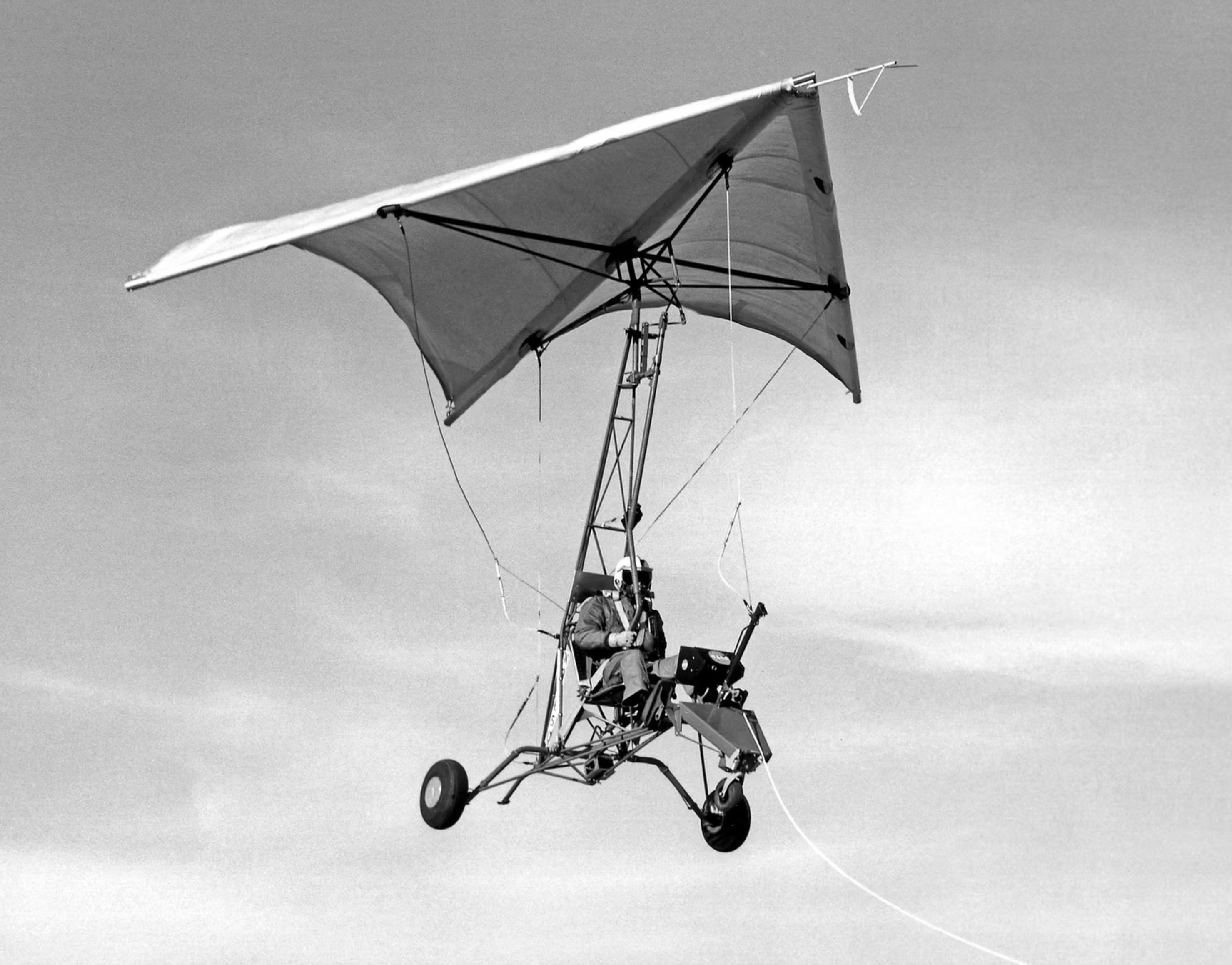Weight Shift Control

Weight-shift control (WSC) in aviation, primarily used in ultralight aircraft like trikes and hang gliders, involves using the pilot's weight to directly influence flight controls. This differs from traditional aircraft control surfaces like ailerons and rudders, which rely on mechanical linkages. The pilot's weight shift against a control bar attached to the wing pivots the aircraft for changes in pitch and bank.
Historical Development
Early Gliding Pioneers
Early gliding pilots, like Lilienthal, experimented with weight-shift control for directional control.
Flexible Wings and Trikes
The development of flexible wings, such as the Rogallo wing, paved the way for weight-shift trikes.
John Dickenson's Ski Wing
Dickenson's flexible-wing ski-kite, the "Ski Wing," was an early example of using weight shift in a powered trike-like design.
Evolution of Weight-Shift Control
The concept evolved from simple hang gliders to powered ultralights, with the pilot's weight shift becoming the primary control mechanism.
Modern Trikes
Modern trikes use weight-shift control in conjunction with more traditional controls for engine management, throttle, and sometimes additional flight instrumentation.
Key Features of Weight-Shift Control
Direct Pilot Control
The pilot's body weight directly influences the aircraft's movement, providing a more intuitive and direct connection to the flight path.
Simple Controls
Weight-shift controls, particularly on trikes, require a relatively simple control bar and linkage system.
Widely Used in Ultralight Aviation
Weight-shift control is the primary control method for ultralight aircraft, including trikes, hang gliders, and powered paragliders.
Benefits of Weight-Shift Control
Simplicity and Directness
The direct connection between pilot weight and control inputs can be easier for new pilots to learn.
Intuitive Maneuvering
Weight shift allows for intuitive maneuvers, particularly during turns and landings.
Space Efficiency
Weight-shift control can be more space-efficient than traditional control surfaces, as evidenced in the designs of ultralights.
